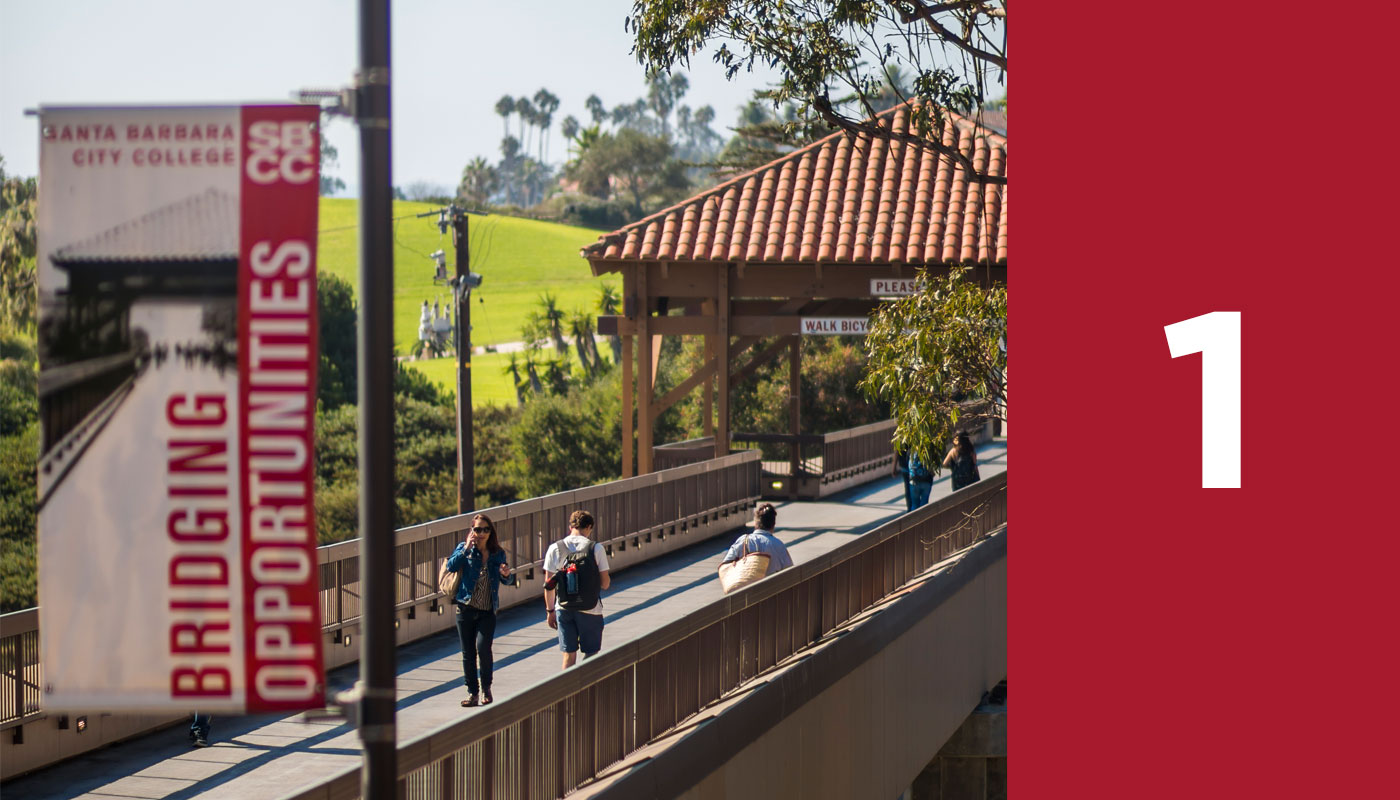
The Smart Money
SBCC Presents a Student's Guide to Financial Fitness
The 411 on Financial Aid
Santa Barbara City College is proud to provide the best possible value in quality higher education. In addition, SBCC encourages students to pursue every possible avenue of financial assistance, including government grants, private funding, and scholarships.
Paying for college takes planning. The information and resources on this page will guide you through the basics of finding, applying for, and securing financial aid.
The Bucks Start Here
Securing the maximum financial aid available should be the first step on your college journey. Follow the helpful links below, and take the mystery out of paying for college.
Parents aren't paying for college? Ask your Uncle Sam.
$6,600
More than 60% of full-time, undergraduate college students receive federal financial aid, with an average award of $6,600, across all types.
99%
Although it is possible to file a FAFSA by mail-in paper form, virtually all students complete the request for application for federal assistance online.

FAFSA First
Before you can start exploring your financial aid options, you’ll need to complete your Free Application for Federal Student Aid, better known as your “FAFSA.” There is good news! It’s easy to complete online, with most applicants finishing in less than 30 minutes!
Five Fast Facts About FAFSA
- You must fill out a FAFSA application every year (on or after October 1), to determine your eligibility for the upcoming school year.
- First-time filers must register a Federal Student ID (FSA ID) before completing the FAFSA.
- The average filer completes the online FAFSA in about 30 minutes.
- The FAFSA is also available in Spanish.
- Completing the FAFSA is the first step in securing, not only federal and state grants, but also work study and federal loan eligibility.
Grants from the State of California
California College Promise Grant (CCPG)
CCPG waives your enrollment fees if you are a qualified California resident or have AB540 residency classification.
Chafee Grant
The Chafee Grant is for youth "aging out" or emancipated from foster care. It pays up to $5,000 per academic year. You must be eligible for Calfornia Independent Living Program Services (ILP) to receive this grant.
Cal Grant
Cal Grants are awarded to California residents based on demonstrated financial need and academic achievement, as measured by your GPA. If you haven't already earned a Bachelor's or professional degree, you could receive between $274 and $1,672 per academic year.
Students with AB540 residency classification may be eligible by filing a California Dream Act Application.
Student Success Completion Grant (SSCG)
The SSCG is a new financial aid program that helps you afford full-time enrollment so you can graduate, begin your career, and start earning money sooner.
12-14 units/semester = $649 ($1,298 per year)
15+ units/semester = $2,000 ($4,000 per year)
You are eligible for SSCG if you are full-time and a recipient of a Cal Grant B or C. To stay eligible for the grant you will need to maintain satisfactory progress (including a 2.0 GPA).
The Three Types of Federal Aid
Grants
Federal grants, such as Pell Grants and FSEOG Grants do not have to be repaid! The average grant for full-time students is $3,700.
Loans
There are several types of federal student loans available, including Direct Subsidized Loans, Direct Unsubsidized Loans, Direct PLUS Loans, and Direct Consolidation Loans. Loans range from $5,500 to $12,500 per year (depending on a students' grade level and expected family contribution).
Work Study
Eligible students can earn money to pay for college by working part-time jobs through
the Federal Work Study program. The average aid provided through work-study is $2,200.
Scholarships and Private Aid
 Scholarships and private grants are available from a wide variety of sources. Start
by contacting your high school or TRIO counselor and asking for advice. Google is
also a helpful resource in finding scholarship opportunities offered by private companies,
trade groups, cultural organizations, activism projects, and more.
Scholarships and private grants are available from a wide variety of sources. Start
by contacting your high school or TRIO counselor and asking for advice. Google is
also a helpful resource in finding scholarship opportunities offered by private companies,
trade groups, cultural organizations, activism projects, and more.
At SBCC recent high school graduates from Gaviota to Carpinteria may be eligible for the SBCC Promise. This special program covers the cost of enrollment and all mandatory fees, as well as required books and supplies. This program is offered by the SBCC Foundation through the generous gifts of our local community.
Free Scholarship Resources on the Web
- Fastweb: A great place to start! Use your personal goals, interests, background and skills to customize your scholarship search.
- Scholarships.com: This platform not only allows you to search for relevant aid, but curates scholarships based on your profile information.
- CareerOneStop: A free, up-to-date, and accurate search tool provided by the U.S. Department of Labor.
Don't Get Scammed!
Don’t pay money for aid forms, scholarship information, or loan repayment support. There are
free resources available!
Make sure your personal information is secure, and keep meticulous records of your transactions.
Stay on top of your credit report, and immediately report any fraudulent activity.
Important Dates and Deadlines
October 1
First day to file your FAFSA or CA Dream Act Application (CADAA) for the subsequent school year. It is recommended that you file early!
March 2
Many California state financial aid programs, including CalGrants, require students to file prior to the June 30 federal deadline.
June 30
Annual deadline for filing your FAFSA and determining aid eligibility for the current school year.
Down With Debt!
Understanding your loan and the implications of borrowing is key to a healthy financial future. Browse the most commonly asked questions below, or visit the Department of Education’s Loan Repayment Guide for more tools and resources, including a repayment calculator.

What type of loan should I select?
1
Federal loans, such as Direct Subsidized Loans and Direct PLUS loans, usually have
better terms, lower and more predictable interest rates, and longer repayment schedules
than for-profit lenders.

How much do I really need to borrow?
2
First, exhaust all avenues of “free” money, including grants and scholarships. Then,
subtract this amount from your total college costs, including living expenses. Borrow
no more than necessary, and be aware of your expected earnings upon graduating when committing to future payments.

How long do I have to pay my loans back?
3
It depends. For subsidized loans, interest is not charged until graduation, usually
with a six-month grace period. Private and unsubsidized loans may require recurring
interest payments during the life of the loan.

What if I can’t pay back my loan?
4
Contact your loan servicer. If you’re in default, visit the Department of Education’s Default Resolution Group
website for more information.